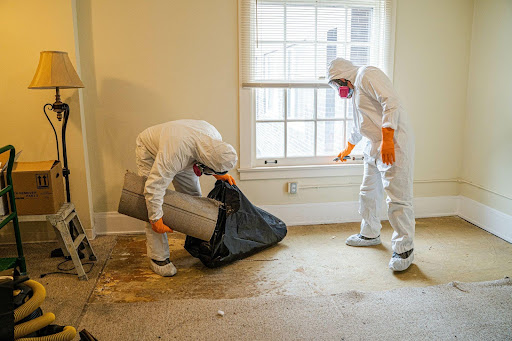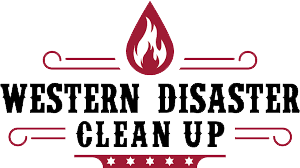Imagine coming home to find water damage in the form of a puddle of water on your kitchen floor or a leaky pipe in your basement. Your first instinct might be to clean it up and move on, thinking it’s just a minor inconvenience.
However, many homeowners don’t realize that even a tiny amount of water damage can have far-reaching consequences if left unattended.
From immediate risks like structural damage and electrical hazards to long-term effects such as decreased property value and escalating repair costs, the impact of ignoring water damage can be both dangerous and costly.
In this blog post, we’ll delve into the various consequences of neglecting water damage. The aim is to underscore the urgency of promptly addressing water damage, not just for the sake of your home but for your health and financial well-being. Without further ado, let’s dive in. 1
The Immediate Consequences
1. Structural Damage:
Water is a powerful force that can seep into the very bones of a building, weakening its foundation and compromising its integrity. When water infiltrates materials like wood, drywall, or concrete, it can cause them to swell, warp, or even rot.
Over time, this can lead to sagging floors, crumbling walls, and a destabilized foundation. The longer the water sits, the more it erodes the structural elements, turning a manageable issue into a significant problem that can jeopardize the safety of the building and its occupants.
Even worse, structural damage often goes unnoticed until it’s too late, hidden behind walls or under floors, making it imperative to address water damage as soon as it’s detected. Ignoring the issue puts your home at risk and can lead to astronomical repair costs that could have been avoided with prompt action.
2. Electrical Hazards:
Water is an excellent conductor of electricity, and when it comes into contact with electrical systems, the results can be disastrous.
Exposed wiring, electrical outlets, and even appliances can become electrified, posing a serious risk of electrical shock or electrocution to anyone who comes into contact with them.
Additionally, the combination of water and electricity can lead to short circuits, which damage your electrical systems and spark electrical fires. These fires can spread rapidly, causing extensive damage to your property and putting lives at risk.
The danger is exacerbated when water damage goes unnoticed or untreated, as the water can seep into hidden electrical conduits and junction boxes, making the problem difficult to identify until it’s too late.
Therefore, it is crucial to address water damage immediately and consult professionals to assess and repair any electrical damage, ensuring the safety of your home and its occupants.
3. Health Risks Like Mold and Mildew:
One of the most insidious consequences of leaving water damage unattended is its impact on your health, mainly through the growth of mold and mildew.
These fungi thrive in damp, humid conditions and can increase rapidly when water damage is not promptly addressed. Mold spores can become airborne and easily inhaled, leading to various respiratory issues, including asthma attacks, allergies, and even more severe conditions like bronchitis.
Some types of mold, such as black mold, produce mycotoxins that can be particularly harmful, causing symptoms ranging from headaches and fatigue to neurological issues and immune system suppression.
While less toxic, mildew can also irritate the eyes, skin, and respiratory tract. Moreover, standing water from leaks or flooding can become a breeding ground for bacteria and mosquitoes, increasing the risk of waterborne diseases and insect-borne illnesses. The longer water damage is left untreated, the greater the risk to your health, making water damage clean up imperative.

The Long-Term Effects
1. Decreased Property Value:
Water damage is a red flag for potential buyers and appraisers, signaling neglect and possible future issues. Even if the visible signs of water damage are repaired, such as repainting walls or replacing damaged flooring, the underlying issues often remain.
These can include weakened structural elements, compromised electrical systems, and lingering mold — all of which can be discovered during a thorough home inspection. When these issues come to light, they can drastically reduce your home’s selling price or even make it unsellable until costly repairs are made.
Moreover, the stigma attached to properties with a history of water damage can make them less appealing to buyers, further driving down the price.
In the long run, the cost of not addressing water damage promptly can be far greater than the immediate repair expenses, making it a financially prudent decision to deal with water issues as soon as they arise.
2. Pest infestations:
Damp, water-damaged environments create ideal conditions for a variety of pests, including rodents, ants, and cockroaches. These pests are attracted to the moisture and the softened, decaying materials that result from water damage, which provide them with both a water source and nesting material.
Once they establish a foothold, these pests can multiply quickly, leading to a full-blown infestation that poses additional health risks and structural damage. For example, rodents can chew through electrical wiring and insulation, while certain types of ants can weaken wooden structures.
Moreover, the presence of pests can exacerbate existing mold and mildew problems, as they often carry bacteria and contribute to poor indoor air quality.
The longer water damage is left unattended, the more inviting your home becomes to these unwanted guests, making timely water damage clean up crucial for maintaining a healthy, pest-free living environment.
3. Escalating Repair Costs:
One of the most financially draining long-term effects of ignoring water damage is the escalating cost of repairs. What might start as a minor issue—such as a small leak or a bit of dampness—can quickly spiral into a major problem requiring extensive remediation.
As water seeps into various parts of your home, it exacerbates existing damage and creates new issues, from structural weakening to electrical malfunctions and mold growth. Each of these problems comes with its own set of repair costs, and these costs multiply as the damage spreads.
Moreover, the longer you wait to address the issue, the more invasive and disruptive the repair process becomes. For instance, what could have been a simple patch job may turn into a need for complete wall replacement, or a straightforward mold treatment could escalate into a full home fumigation.
In the worst-case scenario, you may even have to vacate your home temporarily for extensive repairs, adding the cost of alternative accommodation to your growing list of expenses. Therefore, acting quickly to address water damage is beneficial for the health and safety of your home and its occupants and a wise financial decision.

Prevention and Remediation
1. Early Detection:
The adage “time is of the essence” couldn’t be more accurate regarding water damage. Early detection is crucial for minimizing the impact and preventing the cascade of problems that can arise if water damage is left unattended.
The sooner you identify and address the issue, the less likely it is to escalate into a major problem that compromises the structural integrity of your home, poses electrical hazards, or leads to health risks like mold growth.
Early intervention allows for simpler, less invasive, and more cost-effective solutions. For example, catching a leak early might mean a straightforward pipe repair. In contrast, delayed action could result in extensive water damage, requiring whole sections of your home to be gutted and rebuilt.
Moreover, early detection can preserve the value of your property and prevent the long-term costs associated with remediation and decreased property value. In essence, the quicker you act, the more problems you avoid—making early detection a critical first step in effective water damage clean-up.
2. Professional Help:
While some minor water damage issues may seem manageable through DIY methods, the complexities and potential risks involved make it imperative to seek professional help.
Experts in water damage restoration have the specialized equipment, training, and experience to accurately assess the extent of the damage, including hidden issues that may not be immediately apparent
They can identify the source of the problem, whether it’s a leaky pipe, a faulty appliance, or seepage from external sources, and take immediate steps to stop it. Professionals also have the expertise to handle electrical hazards, structural damage, and mold remediation, ensuring that all aspects of the damage are addressed comprehensively.
Western Disaster Clean Up Is Your Water Damage Restoration Expert
Don’t let water damage wreak havoc on your home, health, or wallet. If you’ve noticed signs of water damage, now is the time to act. Contact Western Disaster Clean Up — the experts in water damage restoration.
With our specialized equipment, experienced team, and comprehensive services, we’ll address the issue promptly and effectively, saving you time, stress, and money in the long run.
Call us at 385.381.6266 or fill out our website form to schedule an appointment for your water damage restoration. Your home is your sanctuary; let Western Disaster Clean Up help you keep it that way.

